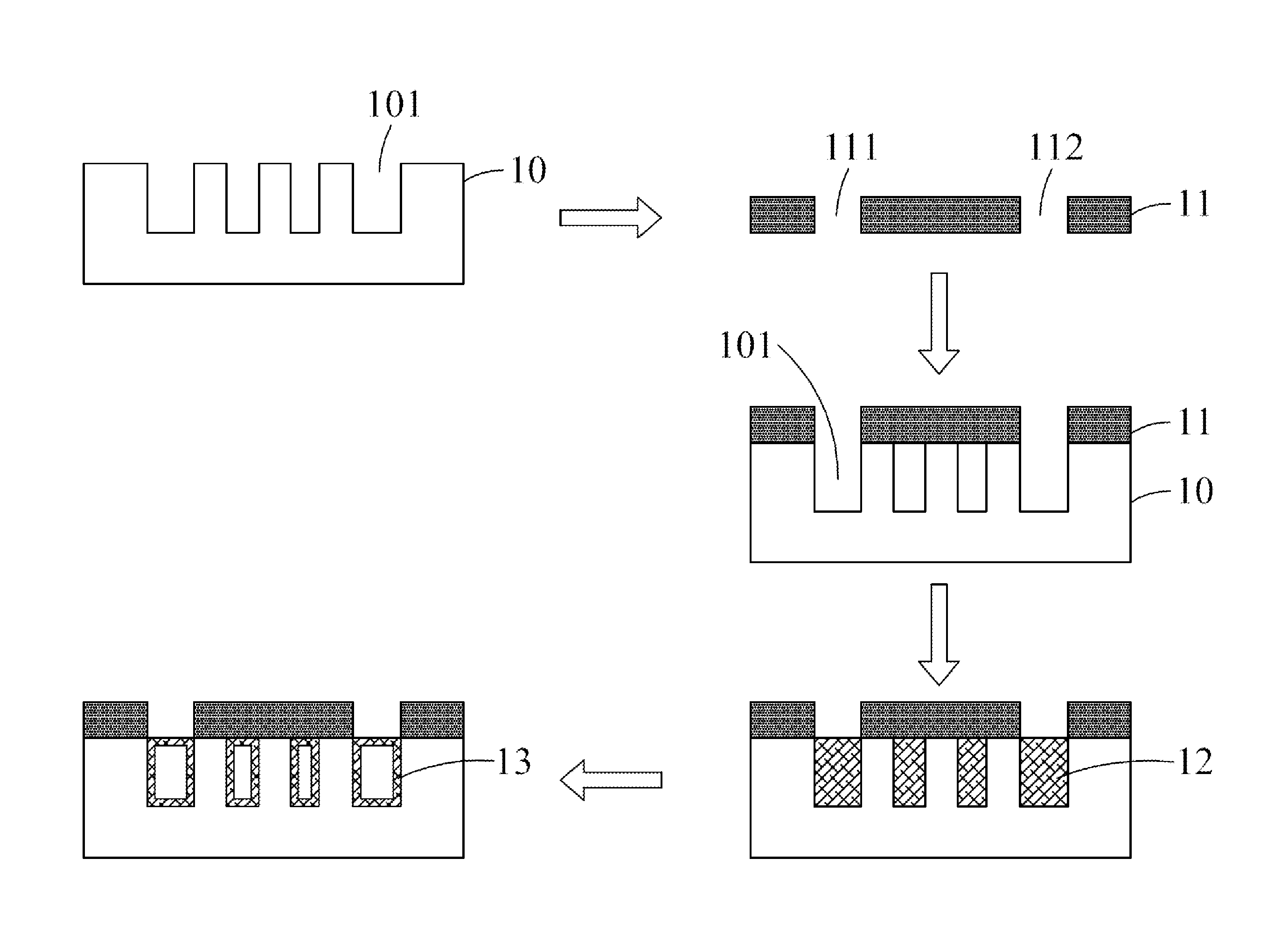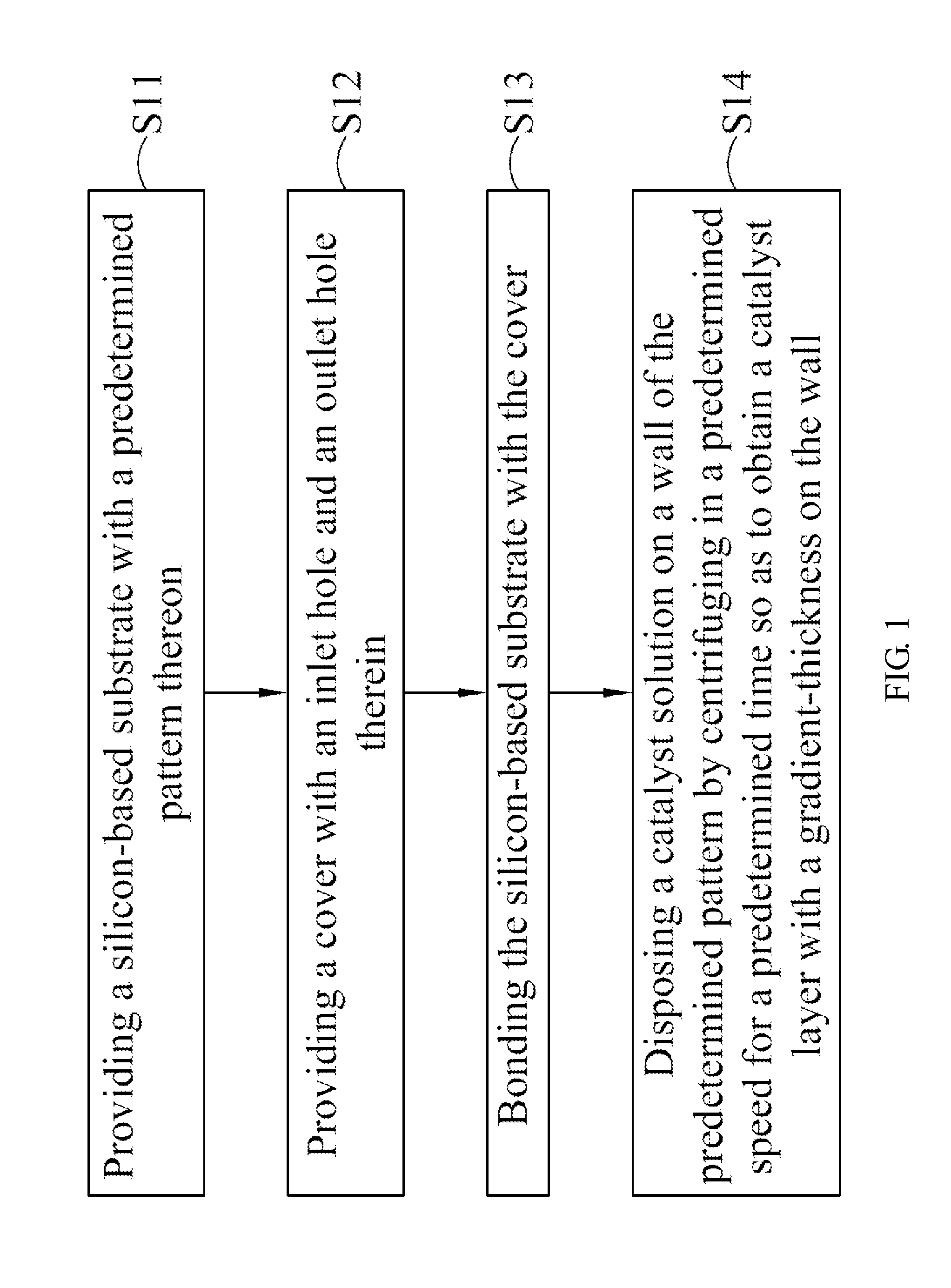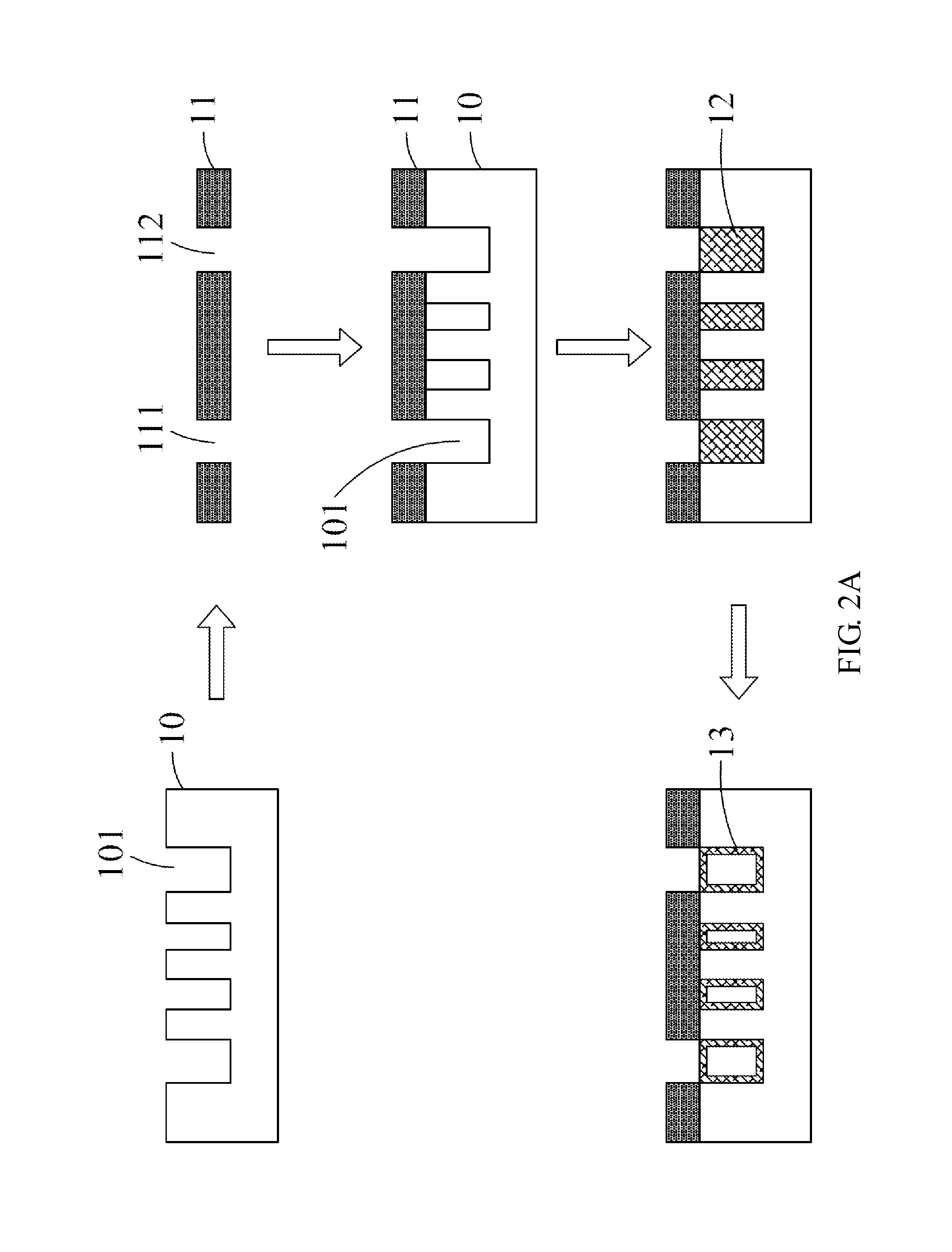Method of disposing catalyst in reformer
a technology of catalyst and reformer, which is applied in the direction of layered products, chemistry apparatus and processes, synthetic resin layered products, etc., can solve the problems of low power density, global warming and energy crisis, and the operation of dm
- Summary
- Abstract
- Description
- Claims
- Application Information
AI Technical Summary
Benefits of technology
Problems solved by technology
Method used
Image
Examples
Embodiment Construction
[0034]The technical content of the present invention will become apparent by the detailed description of the following embodiments and the illustration of related drawings as follows.
[0035]With reference to FIG. 1 and FIG. 2A, for a flow chart and a schematic view of a method of disposing catalyst in a reformer, respectively, in accordance with the present invention, the method of disposing catalyst in a reformer comprises steps of:
[0036]S11: providing a silicon-based substrate 10 with a predetermined pattern thereon;
[0037]S12: providing a cover 11 with an inlet hole 111 and an outlet hole 112 therein;
[0038]S13: bonding the silicon-based substrate 10 with the cover 11; and
[0039]S14: disposing a catalyst solution 12 on a wall of the predetermined pattern by centrifuging in a predetermined speed for a predetermined time so as to obtain a catalyst layer 13 with a gradient-thickness on the wall.
[0040]In a preferred embodiment, the gradient-thickness of the catalyst layer 13 is gradually...
PUM
| Property | Measurement | Unit |
|---|---|---|
| flow rate | aaaaa | aaaaa |
| thickness | aaaaa | aaaaa |
| time | aaaaa | aaaaa |
Abstract
Description
Claims
Application Information
 Login to View More
Login to View More - R&D
- Intellectual Property
- Life Sciences
- Materials
- Tech Scout
- Unparalleled Data Quality
- Higher Quality Content
- 60% Fewer Hallucinations
Browse by: Latest US Patents, China's latest patents, Technical Efficacy Thesaurus, Application Domain, Technology Topic, Popular Technical Reports.
© 2025 PatSnap. All rights reserved.Legal|Privacy policy|Modern Slavery Act Transparency Statement|Sitemap|About US| Contact US: help@patsnap.com



